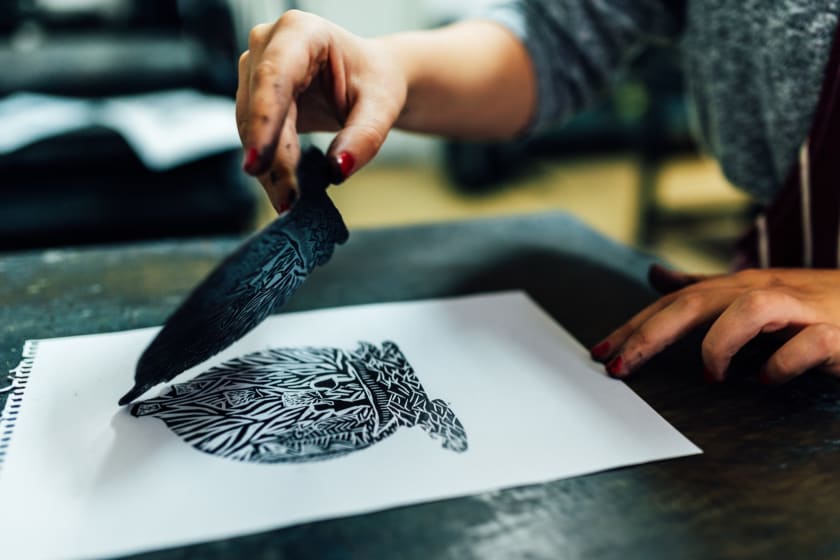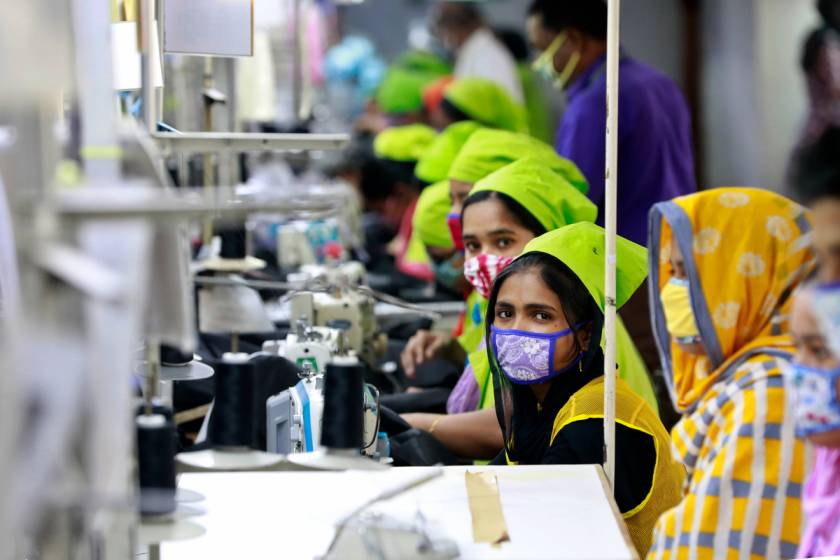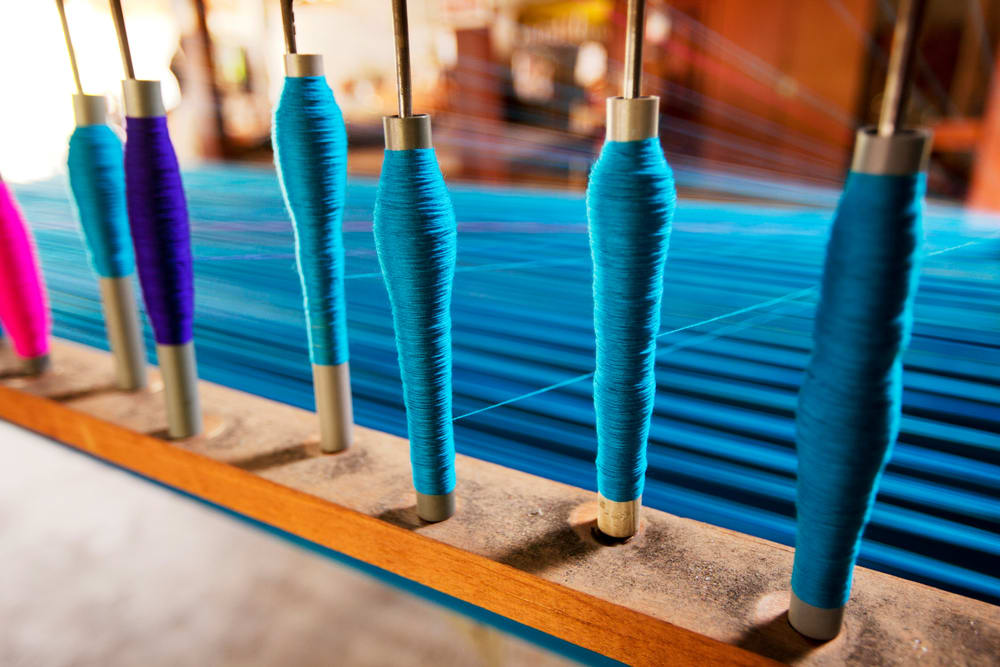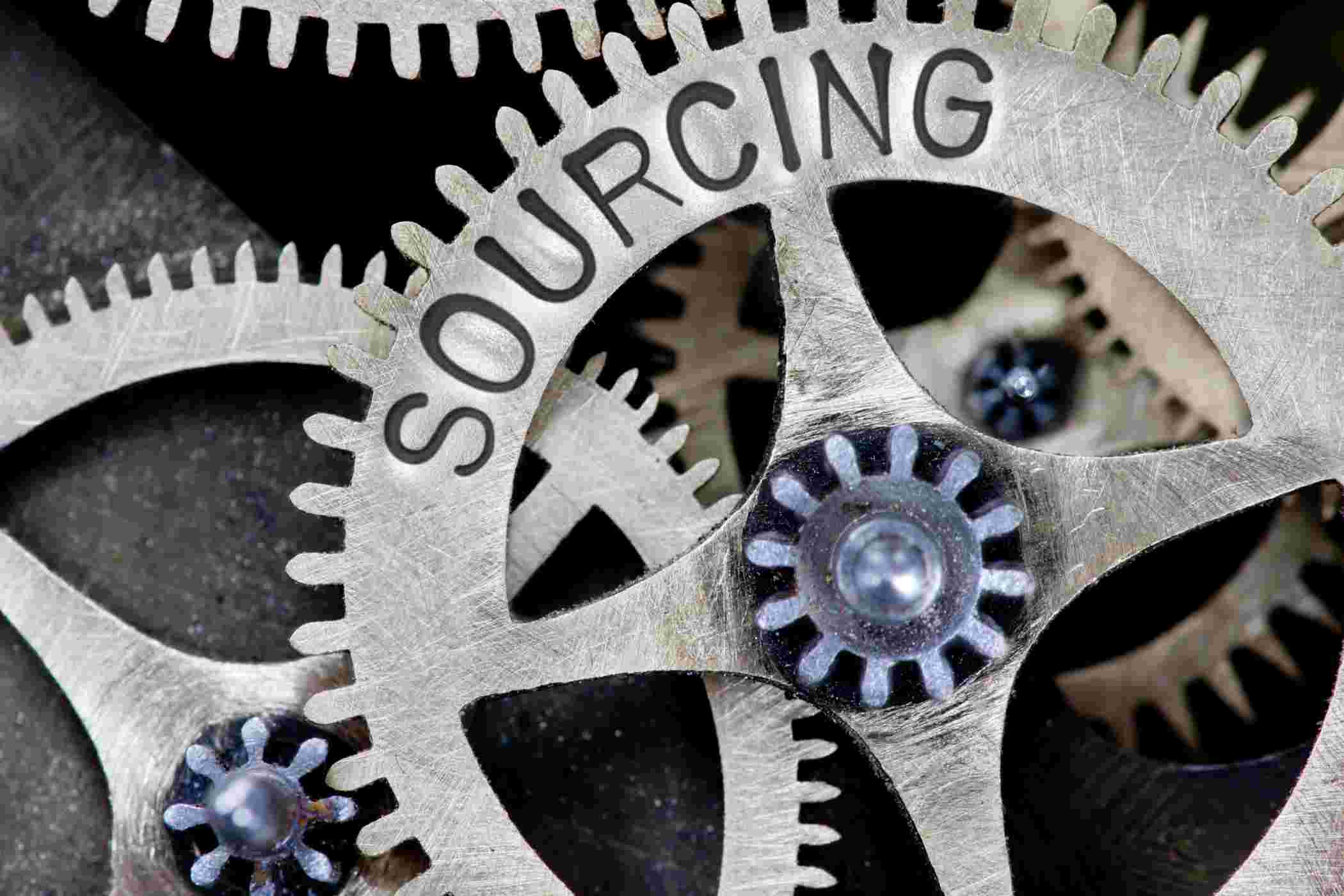3 Printmaking Printing Techniques And Its Importance



Introduction
Printmaking is the process of creating artworks by printing on various surfaces like paper, fabric, wood, metal, ceramic, clay pots, and other surfaces.
Using hand-processed techniques, traditional printmaking is done. Using an electronic machine or a printer, digital printmaking is done. During the printmaking process, identical multiples of the same artwork are replicated.
There are three essential processes of printmaking- relief, intaglio, and surface. Often these methods are combined, and new ways of printmaking are innovated.
1. Relief process
In this process, ink is applied to the original surface of the matrix. The carved or displaced grooves do not make use of the ink. Relief techniques include woodcut or woodblock, wood engraving, linoleum cut, metal cut, cardboard (paper) cut, relief etching, rubbing, and dotted print.
In this printmaking process, the negative or non-printing part of the block or plate is cut out, removed, or etched away. The design stands isolated in relief, and hence this name was given to it.
Let's understand all those sub-processes in detail.
-Woodcuts
This type of printmaking appeared in the 8th century in the East and the early 15th century in the West. This is the most traditional and is the earliest known printmaking (relief-printing) method known to humanity. The design is made directly onto the woodblock, and the areas near the design are cut-away and removed. The structure stands up separately, and then ink is applied on the design part and pasted on the fabric or paper or any other surface. This process is similar to facsimile, and multiple prints of the same type can be created using one engraved wooden block.
Gouges, chisels, or knives are used for engraving the wooden plank design. Scraping, scratching, and hammering are used to carve the design perfectly. Pear, rose, pine, apple, and beech were the most common types of wood used to create these basic block materials.
-Color woodcuts
In this printmaking procedure, a woodcut with two or more colors is created. A separate block for each color is cut out. All the blocks are of the same size, and the final finished product comes out nicely with uniform colors.
The first block is known as the key block, and it contains the most intricate parts of the design. After the key block is finished and printed, the print is transferred to the second block, and this procedure is repeated until all the blocks are completed.
The conception and technique of the Japanese color woodcut were utterly different from that of the European woodcut. After the 19th century, the concept of color woodcut picked up in European countries.
The Japanese technique was very intricate, and there was complete coordination between the artist, the cutter, and the printer.
-Wood engravings
This woodcut method allowed the artist to do more intricate work on the wooden piece. The wood was cut cross-grained rather than plank-wise, and hence the cutter could use fine lines and textures to carve out the design. This method usually used black and white to show the contrast and was mastered in the 18th century.
-Linoleum cuts
Linoleum is a material that consists of a canvas backing, and it is thickly coated with a heterogeneous mixture of linseed oil and powdered cork. Since this material is easy to cut, it was not taken seriously till the 1950s for printmaking purposes. Pablo Picasso made this printmaking process famous by creating a series of linoleum cuts.
-Metal cuts
Soft metals, such as lead or zinc, have been extensively used in the printmaking industry since the 19th century. Since lead was inexpensive and easy to work with, the newspaper industry used it extensively for their illustrations. The famous Mexican artist José Guadalupe Posada used lead frequently for his prints, and to date, metal cuts are popular in the printmaking industry.
-Cardboard (paper) cuts
This type of printmaking is not used in textile, ceramics, or other major industries. This is for children to learn the skill of printmaking using paper cardboards for the creative projects in their school. Often cardboard pieces are glued to each other for making them thick, and then after the designs are drawn on them, they are carved out. Colors are put on the protruded areas, and then the cardboard block is used for printing the same design multiple times.
-Relief etching
This type of printmaking was first used by the English artist and poet William Blake. He transferred his handwritten poems, along with the illustrations, onto the metal plate to be etched and copied several times. In this method, large areas of a metal plate are etched out, and it typically leaves the design relief to be surface-printed. This method of printmaking has been used extensively in industries to date.
-Rubbing
In this method of printmaking, fine paper is placed on an incised or carved surface and rubbed so that the design on the carved surface gets printed on the fine paper. In Japan, this method is used to print even the body of a fish. Japanese also use this method on metal ornaments. In China, rubbings were used to reproduce calligraphy. In India, rubbings were made on tombstones and temple bas-reliefs.
-Dotted prints
The goldsmith uses this process of printmaking to make delicate designs on the jewelry. Criblé plates/dotted print plates were relief printed like woodcuts.
1. Intaglio processes
In this method of printmaking, the ink is forced into grooves or cavities on the surface of the matrix. This method is just the opposite of relief printing. It is three-dimensional and is used most extensively in today’s fabric printing industry. This process requires enormous pressure and embossing the wood, metal, plastic, or paper into the incised lines.
Let's understand all the sub-processes of the intaglio process of printmaking in detail.
-Collagraphy
The printing surface is created by gluing various materials and textures like sawdust, sand, carborundum, plastic sheets, sandpaper, ground walnut shells, tarlatan, laces, crushed paper, etc., with a strong adhesive like polyvinyl acetate. The support plate for collagraphy must be thin and strong, and most of the time, a porous material, such as cardboard, is used for that. It is treated with sealer for support. The sealer can be either brushed or sprayed on.
-Engraving
The design is cut into metal with a graver or burin (a steel rod with a square or lozenge-shaped section). The meta used for this engraving printmaking process is copper, zinc, aluminum, soft iron, steel, and magnesium plates. The burin is pushed into the metal plate, and the deep engraving is done. The slight burrs created in this process are then cleaned off using a scraper.
-Etching
Etching is a process of printmaking in which lines or textures are etched into a metal plate with a variety of acids. Copper, zinc, aluminum, or magnesium plates can be used for this process. Nitric acid, hydrochloric acid, or ferric chloride can be used for the etching process. There are various types of etching like hard-ground etching, soft-ground etching, relief etching, etc., used in the industry to give different kinds of impacts.
-Mezzotint
Mezzotint is a monochrome printmaking process. It achieves tonality by roughening a metal plate with fine burrs or tiny dots made by a metal tool with small teeth. This tool is known as a “rocker.” This process is often combined with other intaglio techniques like etching and engraving to come up with different types of prints. This method was extensively used in 18th century England for producing portraits and other paintings.
-Aquatint
The aquatint is an intaglio printmaking technique in which areas of tones are produced instead of lines. Along with the etching intaglio printmaking technique, it produces both lines and shaded tones. Rosin powder is used for dusting the plate, and the porous ground is created using heat techniques. Then acid is poured, making small cavities, and the colored ink sits into those cavities, giving a beautiful kaleidoscope of colors.
2. Surface-printing processes
Surface printing includes those techniques in which the image is printed from the flat surface of metal, stone, plastic, wood, or other types of materials. There are two distinct sub-processes for this type of printmaking.
-Planographic
The matrix retains its original surface, but it is specially prepared to allow for the transfer of the image. Lithography, monotyping, and digital techniques use planographic methods of printmaking. Your child's birthday cake with the picture of his favorite cartoon character might have been made using this technique.
-Stencil
As a child, you must have played with stencils. In this type of printmaking, ink, color, pressed paint, or liquid paint is pushed through a prepared screen. Developed in the 20th century, silkscreen is a stencil process used extensively for advertising and display work.
This was the synopsis of the three major techniques of printmaking. However, many other contemporary methods have come up. Since printmaking is used in many industries, including newspapers, magazines, textiles, paper manufacturing, cake making, mugs, and other merchandise printing, etc., new methods are innovated by the workers there.
Conclusion
Printmaking is an exciting part of the garment manufacturing process. It allowed the initial fabric makers to print blocks one after the other and make the fabric colorful and artistic. If you are looking for a fashion merchandiser for all your sourcing needs, you can reach out to Fashinza. It will simplify all your sourcing needs and help you focus on creating the blocks for printmaking.



















